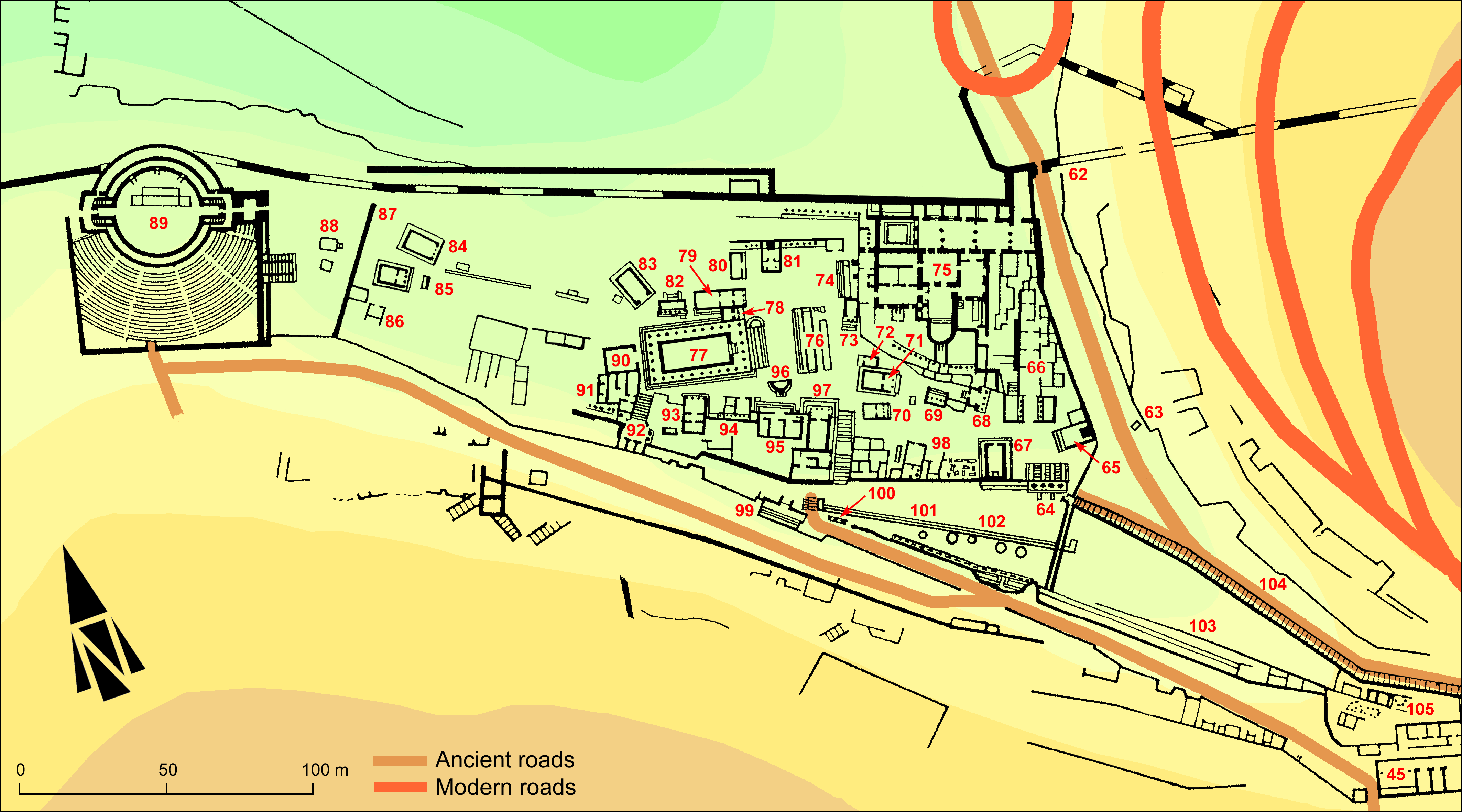EpiDoc XML:
IGCyr1353002
Trismegistos ID:
997615
Source description
Support: Fragmentary block of white marble later recut for IRCyr2020 C.132, which was inscribed on the original lower face (w: 0.165- × h: 0.06- × d: 0.195-).
Layout: Inscribed on the face, of which only the first line is partly preserved.
Letters: 0.015-0.02, restituted height as only the upper half of the letters is preserved; slight serifs; sigma with parallel external strokes; the two circular letters are interpreted as omega only on behalf of a plausible reading.
Date: Possibly second century or begining of first century BC, anyway before 67 BC (see commentary) (content).
Findspot: Found in 1927 by Oliverio in Cyrene ➚ in the Sanctuary of Apollo.
Place of origin: Unknown.
Last recorded location: Cyrene Museum, 78. Seen by J. Reynolds before 1961 in Shahat: Cyrene Museum. Studied by C. Dobias-Lalou en 1979 at the same place.
Text constituted from: First edition (CDL).
Bibliography
Not published before this edition.
Cf. for the find Oliverio 1928, p. 142, n. 11, with photo fig. 40 at p. 136; mention of 'a former Hellenistic inscription' Reynolds 1962, p. 97, n. 3.
Text
French translation
[---]to fille de Sogénès.
English translation
[---]to daughter of Sogenes.
Italian translation
[---]tò figlia di Sogenes.
Commentary
J. Reynolds mentioned an inscription in Hellenistic letters on this face. However, she did not provide a reading, probably because of its very fragmentary condition, due to its reuse as IRCyr2020 C.132, which was the main subject of her paper in 1962. In fact, although the letters are partly cut off, they may be completed as proposed here.
At first sight one might think that the first three letters are the article at the dative, recalling a man's name at that case followed by the name Sogenes as a father's name. However, such a display seems syntactically not very plausible. Much more attractive is the idea of a woman's name at the nominative case, ending with -τώι. This type of feminine names is rather common in Cyrenaica and Στρατώι would be a good candidate, although it is perhaps dangerous to push this ahead.
The stone was probably originally a base. As it was re-cut and possibly moved to its secondary findspot, it is impossible to guess whether the inscription was honorary or funerary. Reynolds 1962 thought the stone to have been found 'before 1941, during Italian excavations in the Agora'. However, in Oliverio's publication it is mentioned amongst the finds of the 1927 excavations in the Sanctuary of Apollo. This might be the place of its re-use for IRCyr2020 C.132, if ever it had not been brought to this area for destruction in the lime-kilns. Anyhow, that proves nothing for the original place of the first monument it belonged to.
CC BY-NC-SA 4.0 Deed Attribution-NonCommercial-ShareAlike 4.0 International License.
All citation, reuse or distribution of this work must contain a link back to DOI: https://doi.org/10.60760/unibo/igcyrgvcyr2 and the filename (IGCyr000000 or GVCyr000), as well as the year of consultation.


